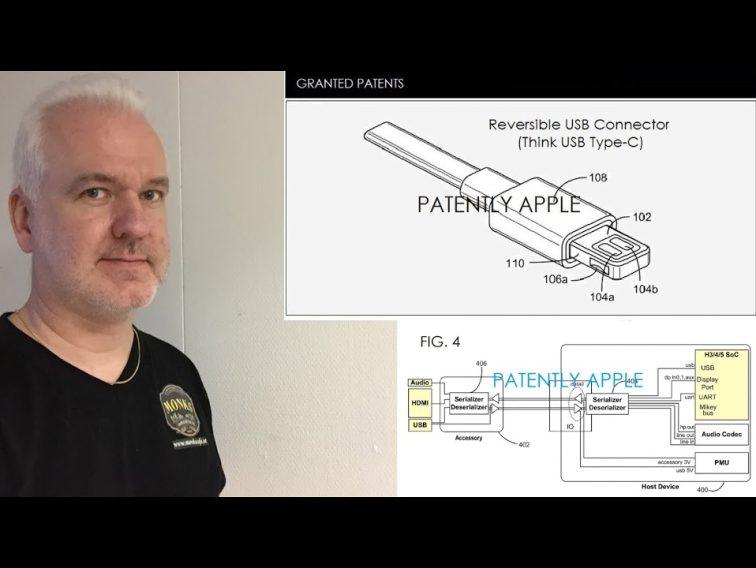Contents
Intro
Ever wondered who invented USB-C? You’re not alone! This sleek and reversible connector has transformed the way we connect our devices. From smartphones to laptops, USB-C is everywhere, but its journey is just as fascinating as its functionality. In this article, let’s dive into the physical design of USB-C, explore its history and development, and uncover the key features that make it a game-changer in the tech world.
Physical Design of USB-C

The beauty of USB-C lies in its physical design. Unlike earlier USB connectors, USB-C has a symmetrical design that allows you to plug it in either way. That’s right! No more fumbling around in the dark trying to insert your cable correctly. This feature makes it not just user-friendly but also incredibly convenient.
The connector is compact yet robust, making it perfect for various devices like smartphones, tablets, and laptops. The seamless integration of the reversible feature means you can swap out cables and connect devices with ease. Seriously, isn’t that what we all want in our tech?
History and Development

So, when did this all begin? The USB Implementers Forum developed USB-C as part of an industry effort to create a universal standard for connectivity. The official release date was in August 2014. It’s hard to believe it’s been around for a while now!
But let’s dig deeper. USB-C was designed to address the limitations of older USB types like USB-A and USB-B. With the rise of technology, we needed something more versatile, right? The development was a response to the increasing demands for higher data transfer rates and power delivery.
This journey involved significant contributions from major industry players, including Apple, Google, and Intel. Their collaboration ensured USB-C could serve various needs, paving the way for future technologies. Imagine that! A connector designed by some of the biggest names in tech.
Key Features

Now let’s get to the fun part—the key features of USB-C that make it so awesome!
Data Transfer Speeds
One of the standout characteristics of USB-C is its data transfer speeds. Depending on the version, it supports speeds of up to 40 Gbps. For context, that’s seriously fast! We’re talking about moving large files, photos, and videos in mere seconds.
Power Delivery Capabilities
But it doesn’t stop there. USB-C also boasts impressive power delivery capabilities. It can deliver up to 100 watts of power. This means it can charge everything from tiny gadgets to larger devices like laptops. Talk about a connector that does it all! If you’ve ever done a late-night work session with a dying laptop, you’ll appreciate this feature.
Video Output Support
Another fantastic feature is video output support. USB-C can connect to monitors using protocols like DisplayPort and HDMI. This flexibility opens up so many possibilities, especially for creatives who need to hook up their laptops to external displays for editing or presentations.
Adoption and Use Cases
USB-C is not just a trend; it’s here to stay! We see it in a wide variety of devices. From iPhones to iPads, and even AirPods, this connector has silently revolutionized how we use tech.
Devices Using USB-C
Let’s break this down. First off, smartphones are a big player in the USB-C game. Not just Android devices; Apple made the switch in its newer versions for compatibility. It’s incredible to see how it unifies different tech ecosystems.
Next, we have tablets. Many brands, including Samsung and Apple, are using USB-C for their high-end tablets. For instance, models like the iPad Pro have fully embraced this connector, allowing seamless integration with accessories like keyboards and adapters.
And let’s not forget laptops. Almost every major laptop brand now utilizes USB-C for charging and data transfer. The MacBook series, for example, has made this change, enhancing portability and functionality.
Integration in Apple Products
Speaking of Apple, they’ve been at the forefront of this transition. Starting with the MacBook series and moving to other products, Apple has been pushing for USB-C integration. If you want to stay current with your devices, it’s a must-know topic!
Global Trends Towards Universal Standards
Looking at the bigger picture, USB-C is leading the charge towards a universal connector standard. Many countries and organizations are advocating for it, and some even consider regulations to streamline this change. It’s a fascinating development worth keeping an eye on.
Community Feedback and Discussion
The move towards USB-C hasn’t gone unnoticed. Community discussions on platforms like Reddit show people are buzzing about it, with opinions all over the board.
Opinions from Forums and Expert Discussions
Many users love the convenience, praising how it simplifies connections and charging. Others, however, express concern about transitioning from older USB types, especially those with a collection of older cables and devices.
Advantages of USB-C
Overall, the advantages seem to outweigh the concerns. Think about it: faster data, higher power delivery, and a single cable for multiple uses. What’s not to like? The convenience of having one connector for various devices is a game-changer!
Challenges Faced During Adoption
However, the transition hasn’t been smooth for everyone. Compatibility issues arise, particularly for those who have older devices. But as time passes, it seems like the entire tech landscape is shifting towards USB-C. We might just be inching closer to cable clutter-free living.
Conclusion
In summary, USB-C is a marvel of modern technology. From its inception by the USB Implementers Forum to its diverse applications today, this connector is shaping our connection experience. I invite you to share your thoughts, experiences, or any burning questions in the comments! Don’t forget to check out more engaging content at Iphone7price.org.



